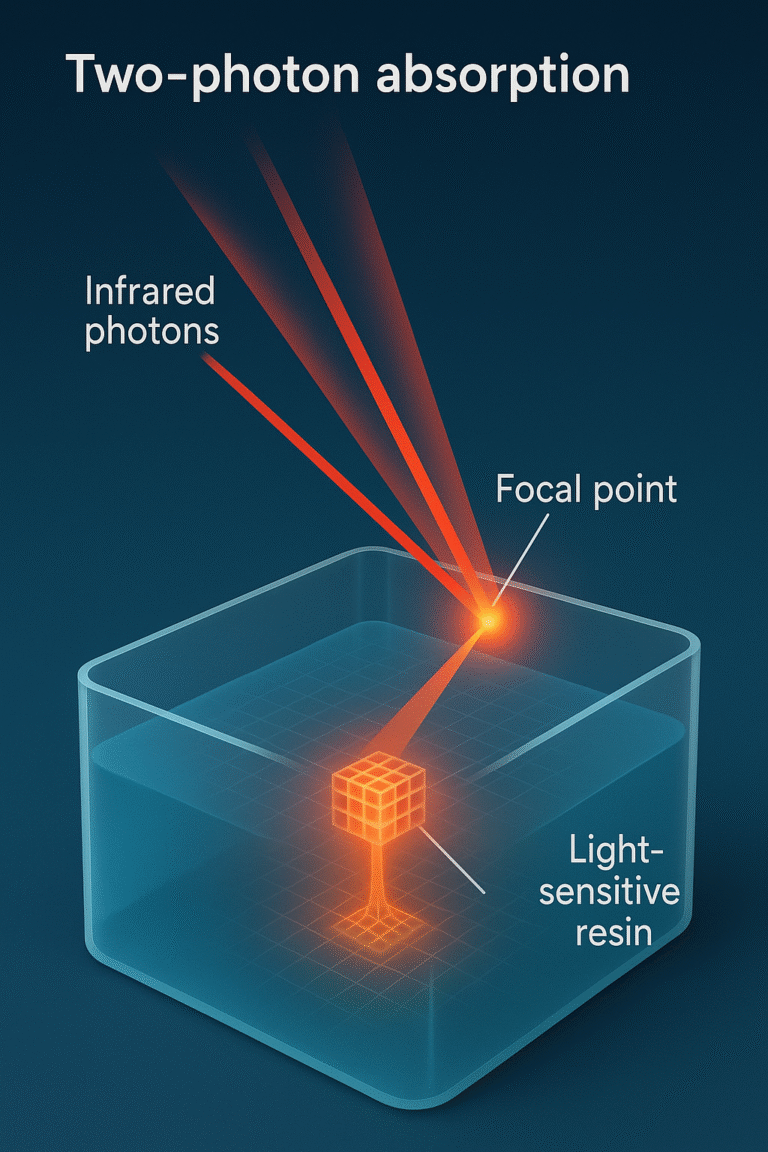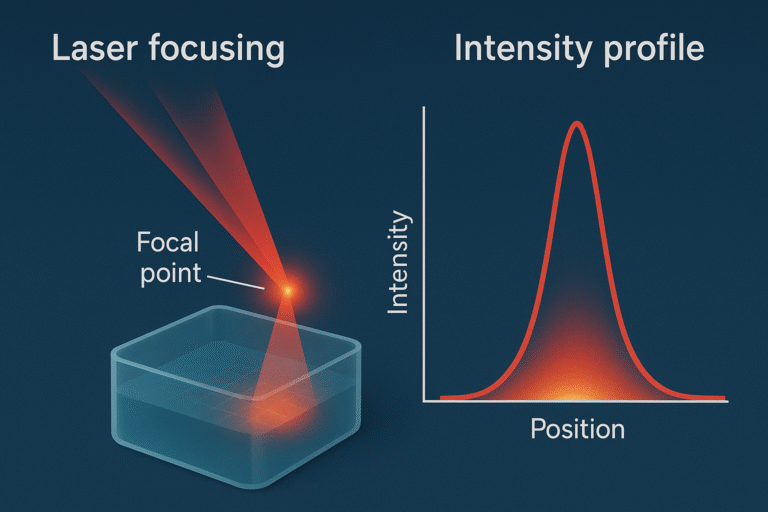

Understanding the Laser-Induced Polymerization Process from a Microscopic Perspective
Two-Photon Polymerization (TPP) is a revolutionary 3D micro/nanofabrication technology that overcomes the limitations of traditional manufacturing methods by enabling the creation of intricate three-dimensional structures with feature sizes down to 100 nanometers.
TPP has demonstrated significant potential in a variety of fields, including miniaturized optical components, biomedical devices, MEMS, and quantum optics.
Unlike conventional photopolymer-based 3D printing, which relies on layer-by-layer accumulation, TPP leverages the nonlinear effects of quantum physics to initiate polymerization precisely at any point within the photosensitive resin — essentially performing “3D sculpting” at the microscopic scale.
We achieve sub-micron resolution, making our technology ideal for applications that demand extremely high detail and structural fidelity.
Lateral size: Up to 2.5 × 2.5 cm with sub-micron precision
Vertical height: Up to 25.1 mm; taller structures may require more time and cost depending on design complexity
Compared to other providers, we significantly shorten production timelines — delivering large-area, high-precision 3D prints within one week.
We also offer accelerators designed to enhance product adhesion to substrates.
AstraWriteTM 提供了一个直观和全面的用户界面,来实时监控和控制打印过程。
从定制设计的 CAD 文件转换成 DMD 图案后,AstraWrite 控制 FP NanoPrinter 加载 DMD 图案,来制造特定设计的 2D 或 3D 结构。AstraWrite 还允许用户控制和直接连接 FP NanoPrinter 中的子系统,包括 DMD、XYZ 载物台和激光系统。

The photosensitive resin undergoes polymerization by absorbing two near-infrared photons, with curing confined strictly to the focal region — enabling true 3D voxel-level fabrication.
This nonlinear absorption mechanism gives TPP exceptionally high spatial selectivity.
Showcasing the excitation process, resin reaction mechanism, and focal control — the core principles behind TPP technology.
Composed of monomers, photoinitiators, and additives, the resin polymerizes upon exposure to photon energy.
Two infrared photons trigger the activation process within a femtosecond time window.
Focusing forms voxels approximately 100–200 nm in size, enabling a “sculpting-style” fabrication approach.

TPP exhibits a distinct intensity threshold effect — polymerization occurs only when the light intensity exceeds a certain threshold.
This results in highly defined processing boundaries and effectively prevents unwanted curing outside the focal region.
We develop our own photoresists and offer multiple high-quality formulations.
However, detailed technical data is only provided upon confirmation of collaboration intent.
For reference, customers may design their systems based on widely available commercial photoresists, such as IP-Dip by Nanoscribe, as our materials are comparable in performance.
If customers have special requirements, we also provide customized solutions and have the capability to develop tailored materials to meet specific needs.
Refractive Index (RI): 1.50 – 1.53 (based on Nanoscribe data)
Transmittance greater than 80% can be achieved.
Our system supports both auto-focus and dynamic focus, and can be configured based on customer requirements.
Achieving < 20 nm surface roughness is challenging.
Our system is capable of reaching < 50 nm,
with an optimal working range between 100–150 nm.
Completion within a few hours is achievable for centimeter-scale structures, depending on the specific dimensions.
Approximately 0.2–1 μm; down to 200 nm in simpler cases.
Up to 340 nm resolution achievable.
50nm

Exploring a New Era of Optics, Leading the Future of Technology.

Copyright © 2025 Astra Optics Limited